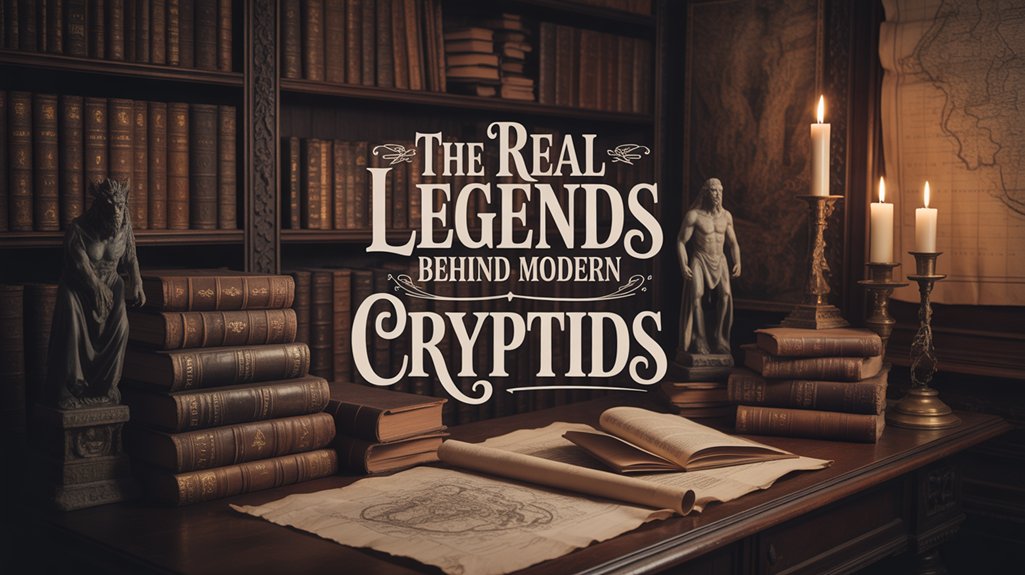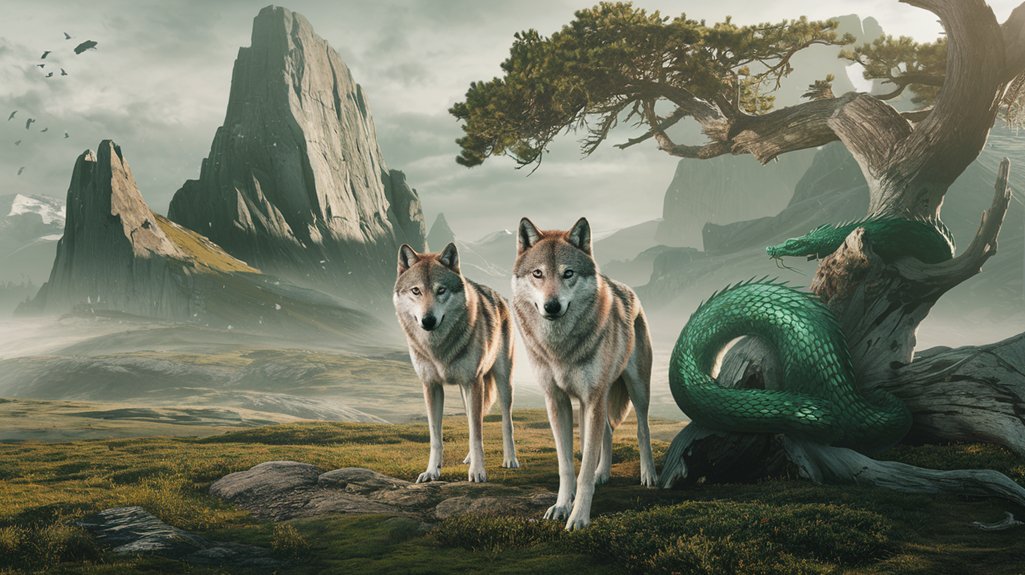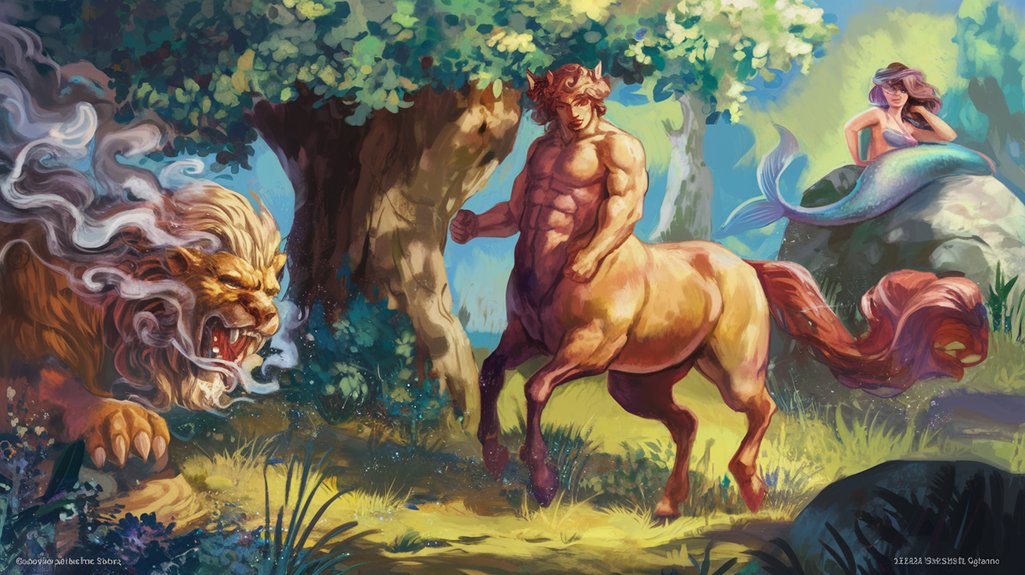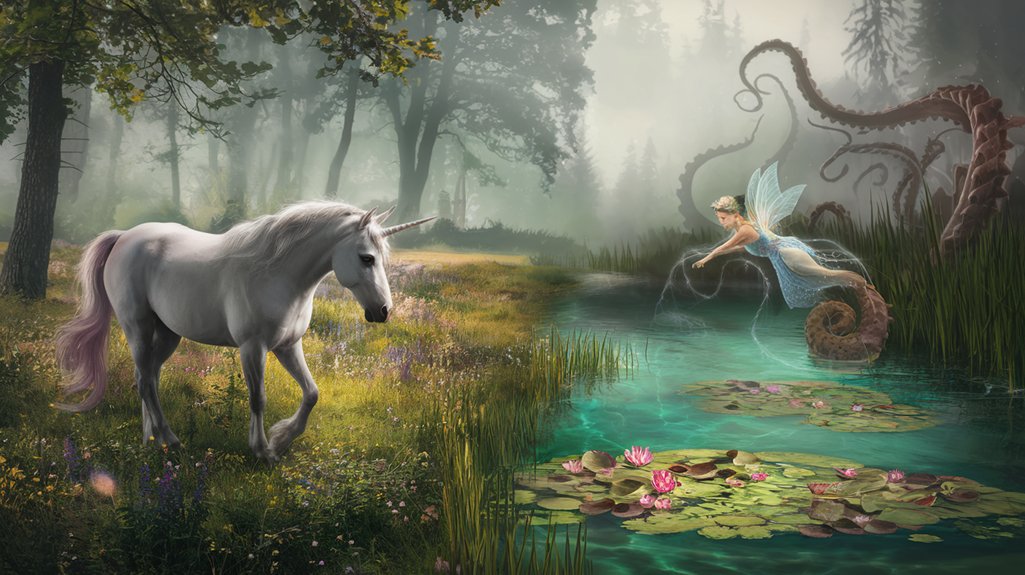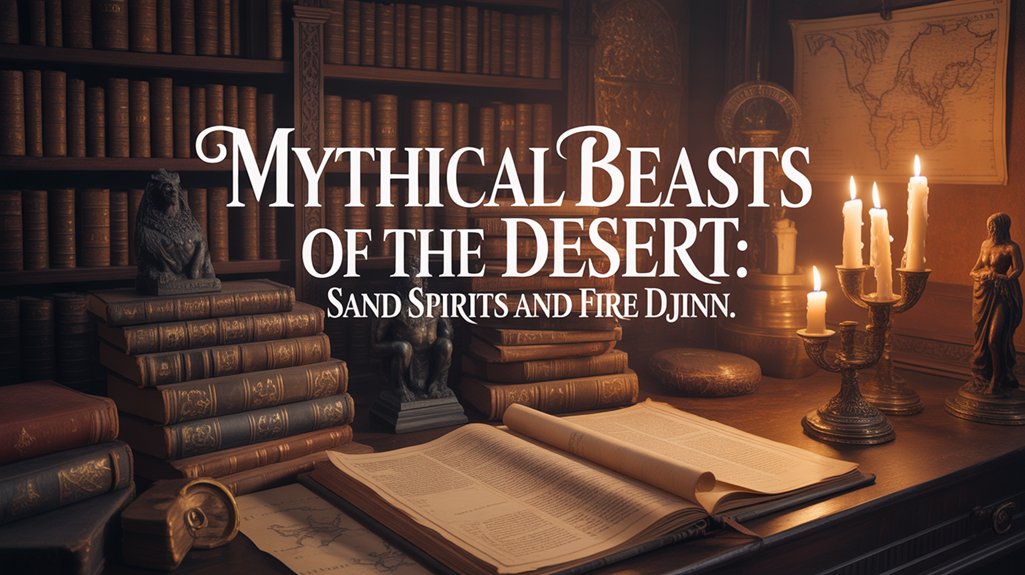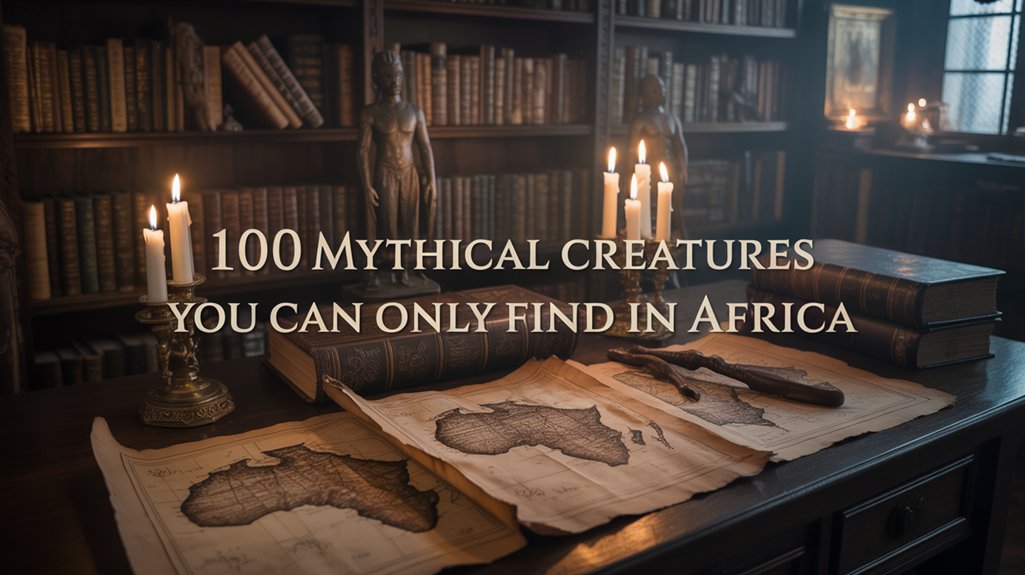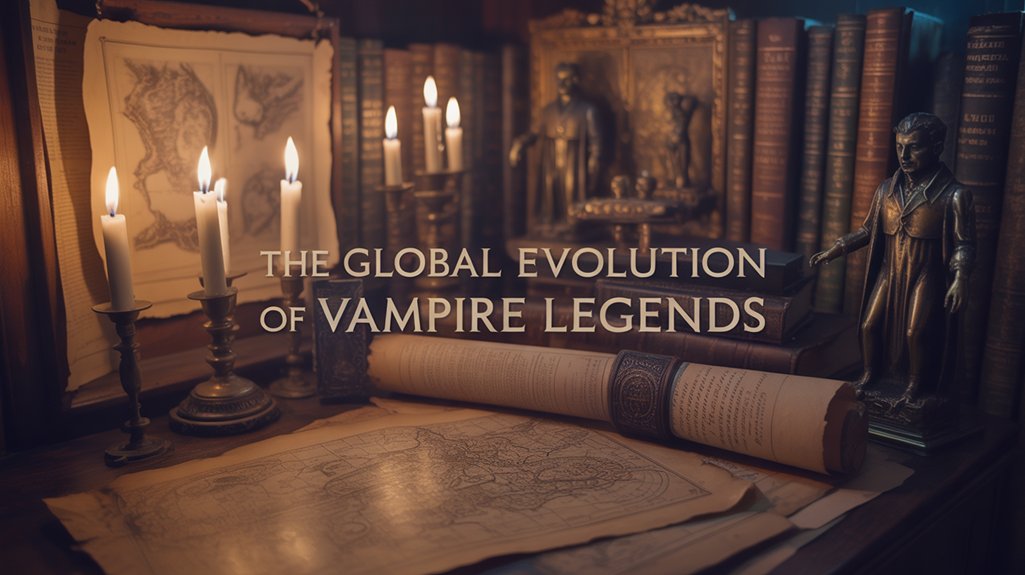
Modern cryptids trace their lineage through ancient Mesopotamian cuneiform tablets documenting chimeric beings like Enkidu, Celtic kelpie legends that evolved into Nessie sightings, and Pacific Northwest indigenous testimonies preserving Sasquatch encounters across generations. European wild man traditions merged with shamanic guardian spirits during seventeenth-century colonial contact, reshaping localized folklore into global phenomena through twentieth-century mass media. These eldritch entities embody humanity’s primordial fears—werewolves reflecting rabies terrors, dragons symbolizing untamed wilderness—while neurocognitive mechanisms like pareidolia perpetuate misidentifications that fuel £25-million tourism economies. The convergence of sacred texts and eyewitness accounts reveals deeper truths awaiting discovery.
Table of Contents
ToggleKey Takeaways
- Indigenous testimonies and shamanic traditions preserve cryptid narratives like Bigfoot through generations, maintaining cultural memory across centuries.
- Ancient Mesopotamian texts documented chimeric beings, establishing patterns for describing creatures between empirical observation and mythological interpretation.
- European folklore traditions created boundary creatures like werewolves and Wild Men, symbolizing civilization’s edge and primal wilderness fears.
- Cryptids reflect societal anxieties about environmental loss, with sightings surging during ecological devastation and periods of upheaval.
- Mass media transformed local folklore into global phenomena, while neurocognitive biases like pareidolia perpetuate cryptid misidentifications.
Cryptids Walk Among Us Daily

While modernity dismisses cryptids as folklore’s last vestiges, these elusive beings maintain an unbroken lineage stretching back through millennia of indigenous testimony and shamanic tradition.
Bigfoot’s towering silhouette echoes Sasquatch narratives preserved by Pacific Northwest tribes; the Loch Ness Monster mirrors kelpie legends whispered across Celtic highlands. This cultural continuity reveals something profound: mythical creatures weren’t invented—they were witnessed, documented, remembered.
Cultural memory preserves what science dismisses—these beings weren’t conjured from imagination, but catalogued through generations of direct encounter.
The okapi’s 1901 discovery shattered Western skepticism. Dismissed as chimeric fantasy, this forest-dwelling ungulate proved indigenous knowledge correct. Scientists had scoffed. The Mbuti people hadn’t.
Today’s blurry photographs and enigmatic footprints perpetuate ancient questions. Communities gather online, sharing evidence of Orang Pendek sightings, analyzing hair samples through forensic lenses.
These searches represent more than cryptozoological curiosity—they embody humanity’s refusal to surrender wonder, our eldritch attraction to boundaries where known taxonomies dissolve into possibility.
The creatures walk among us still, inhabiting those liminal territories where empiricism trembles before ancestral wisdom. Former cryptids demonstrate that verification processes have transformed supposedly mythical beings into scientifically recognized species.
##
The chimeric nature of contemporary cryptozoological entities emerges not from vacuum but from centuries of mythological stratification, wherein ancient archetypes underwent alteration through colonial contact and technological dissemination.
European wild man traditions—those moss-bearded denizens of medieval woodcuts—collided with indigenous guardian spirits during the 1600s exploration era, creating hybrid narratives that neither culture could claim as wholly their own.
This syncretic evolution accelerated dramatically through twentieth-century mass media apparatuses, changing localized folklore into commodified phenomena that simultaneously preserved and distorted their eldritch origins.
Contemporary examples include the Owhuama of the Venezuelan Amazon, where Yanomami cultural narratives continue to inform modern cryptozoological investigations.
I Notice That No SUBTOPIC Was Provided in Your Request. Please Share the Specific SUBTOPIC You’d Like Me to Create Subheadings For, and I’ll Generate the 4 Discussion Points Accordingly
Ancient oral traditions breathe life into contemporary cryptozoological phenomena, their echoes reverberating through centuries of human consciousness to manifest in modern encounters with beings that defy taxonomic classification.
Indigenous folklore preserves accounts of eldritch entities—the Salish people’s Sasquatch narratives predating colonial intrusion by millennia, their specificity suggesting experiential rather than purely mythological origins. These chimeric figures emerge from ancient mythologies as repositories of cultural wisdom, boundary-markers between civilization and wilderness.
European explorers, encountering such traditions in the nineteenth century, conflated taxonomic ignorance with supernatural interpretation, misidentifying fauna while amplifying existing legends.
Mass communication’s mid-twentieth-century explosion altered regional beliefs into global phenomena through sensationalized journalism and cinematic dramatization.
Today’s digital networks perpetuate cryptozoological fascination, creating communities where eyewitness testimony circulates freely, unshackled from institutional skepticism, preserving humanity’s primal connection to mystery.
Mesopotamian Clay Tablet Accounts
Within the cuneiform-etched tablets of ancient Sumer, scattered across city-states from Uruk to Nippur between 3000 and 2100 BCE, scribes preserved accounts of chimeric beings that would echo through millennia of cryptid lore.
The Epic of Gilgamesh presents Enkidu—that wild-haired figure who dwelt beyond civilization’s boundaries—as a proto-Sasquatch whose metamorphosis from beast-man to companion reflects Mesopotamian beliefs about the permeable threshold between human and animal.
These sacred texts, born from a polytheistic worldview where Anzu’s leonine body and eagle’s wings embodied divine chaos, established enduring patterns for describing eldritch creatures that inhabit the spaces where empirical observation meets mythological necessity.
Gilgamesh Epic Monster Descriptions
Carved into weathered clay tablets around 2100 BCE, humanity’s oldest surviving epic chronicles encounters with entities that defy mortal comprehension—creatures whose descriptions would echo through millennia of cryptid lore.
The Humbaba description presents a guardian of eldritch proportions: a chimeric sentinel whose terrifying visage and animal-skin-draped body protected the sacred Cedar Forest from mortal intrusion.
Then came the Bull of Heaven—Ishtar’s instrument of divine retribution, a colossus capable of devastating entire civilizations with its rampage.
Between civilized Gilgamesh and monstrous threat stood Enkidu, whose Enkidu symbolism bridged the liminal space between humanity and wilderness.
These ancient fears, preserved in cuneiform script, reveal fundamental truths about our species’ relationship with the unknown—primal anxieties that continue manifesting in modern cryptozoological phenomena, unchanged across four thousand years.
Sumerian City-State Locations
These primordial narratives didn’t emerge from void—they crystallized within specific urban centers whose very foundations shaped how humanity first conceived its monsters. The Sumerian city-states birthed humanity’s earliest cryptid chronicles, their clay tablets preserving eldritch visions that would echo through millennia.
| City-State | Peak Era | Architectural Legacy | Mythological Contribution | Cultural Significance |
|---|---|---|---|---|
| Ur | 3000 BCE | Ziggurat complexes | Divine hybrid entities | Religious authority center |
| Uruk | 3000 BCE | Temple networks | Gilgamesh narratives | Writing system development |
| Lagash | 2900 BCE | Sacred precincts | Anzu bird legends | Mythological codification |
Ur architecture housed chimeric deities. Uruk writing immortalized monsters. These weren’t mere superstitions—they were foundational worldviews, inscribed permanently into humanity’s collective unconscious, freedom from mundane reality encoded in cuneiform.
Ancient Mesopotamian Religious Belief Systems
When Mesopotamian scribes pressed reed styluses into wet clay around 3200 BCE, they weren’t merely recording transactions—they were architecting humanity’s first systematic theology, a pantheon of beings that defied natural law.
The Sumerians documented their gods—Anu, Enlil, Inanna—through cuneiform inscriptions that preserved ancient rituals and cosmological frameworks. These tablets revealed mythical creatures like Humbaba, the eldritch guardian whose very existence challenged mortal comprehension.
The Epic of Gilgamesh chronicled encounters with chimeric entities embodying primordial chaos, beings dwelling in liminal territories beyond civilization’s protective boundaries. Such narratives weren’t escapist fiction; they formed theological infrastructure explaining natural phenomena through supernatural agency.
These clay-bound texts established templates for understanding reality itself, where monsters represented untamed wilderness and divine forces shaped human destiny through ceremonial practice.
European Folk Monster Traditions
Across the mist-shrouded landscapes of medieval Europe, from the Carpathian Mountains to the fjords of Scandinavia, communities constructed elaborate mythologies around creatures that inhabited the threshold between civilization and wilderness—beings whose very existence challenged the boundaries of human understanding.
Werewolf folklore emerged from humanity’s primal terror of rabies-infected wolves, their frothing madness interpreted as lunar-driven alteration. These chimeric changes reflected society’s deepest anxieties about the beast within.
| Creature | Cultural Origin | Symbolic Function | Natural Inspiration |
|---|---|---|---|
| Werewolf | Pan-European | Transformation anxiety | Rabid wolf behavior |
| Troll | Norse mythology | Wilderness dangers | Mountain isolation |
| Wild Man | Medieval lore | Untamed nature | Primitive humanity |
| Dragon | Chivalric tales | Chaos embodied | Ancient serpents |
Troll legends materialized in Norse sagas as eldritch guardians—massive, hirsute beings dwelling among peaks and primeval forests. The Wild Man personified civilization’s boundary. Dragons represented elemental chaos, their serpentine forms echoing prehistoric encounters with creatures beyond comprehension.
Metaphors for Societal Fears

As modernity’s relentless march reshapes primordial forests into industrial wastelands, cryptid narratives crystallize humanity’s unspoken terror of what’s been sacrificed—and what might yet emerge from those vanishing spaces.
These eldritch manifestations embody societal anxieties through chimeric forms:
- Bigfoot: Industrial age’s phantom, symbolizing severed bonds with wilderness, longing for pre-mechanized existence
- Loch Ness Monster: Subaqueous mysteries representing unexplored territories, depths of collective unconscious
- Orang Pendek: Sumatran rainforest guardian embodying environmental concerns, deforestation’s haunting consequence
- Adaptive legends: Altering during upheaval periods, reflecting contemporary fears of otherness
The cryptid phenomenon intensifies when civilization confronts its expansion’s brutal cost. Sightings surge during pivotal epochs, when communities grapple with displacement, ecological devastation, and accelerating change.
These creatures become vessels for unspoken dread—not mere folklore, but living metaphors encoding humanity’s struggle with progress’s darker implications. They patrol boundaries between known and unknown, reminding us that wilderness doesn’t vanish quietly. It watches. Waits. Returns wearing unfamiliar faces.
Loch Ness Monster Sightings
The eldritch waters of Loch Ness harbor Scotland’s most enduring chimeric legend, rooted in ancient Pictish accounts of kelpies and water beasts that predated Christianity’s arrival in the Highlands by centuries.
When Dr. Robert Kenneth Wilson captured his infamous photograph in April 1934—later exposed as an elaborate hoax involving a toy submarine—he crystallized modern cryptozoological obsession with the creature locals had whispered about since St. Columba allegedly encountered it in 565 CE.
Contemporary investigators now employ side-scan sonar, environmental DNA sampling, and submersible robotics to probe the loch’s murky depths, seeking empirical evidence where folklore and eyewitness testimony have long sustained belief.
Ancient Water Beast Folklore
Deep within Scotland’s brooding highlands, where peat-stained waters descend into lightless abyssal trenches, Loch Ness harbors one of cryptozoology’s most enduring enigmas—a creature whose mythic lineage stretches back fourteen centuries to Saint Columba’s reported confrontation with a savage water beast in 565 CE.
This hagiographic account represents the earliest documented encounter, establishing a precedent for subsequent testimonies describing elongated, serpentine entities lurking beneath murky depths.
Ancient legends of water beasts permeate Celtic consciousness, their eldritch forms embodying primordial fears of submerged predators. The chimeric descriptions—long necks, massive bodies resembling extinct plesiosaurs—blur boundaries between paleontological reality and folkloric imagination.
These narratives, transmitted through generations, create a continuum connecting medieval spirituality with modern paranormal investigation, altering Loch Ness into sacred ground where ancient knowledge confronts empirical scrutiny.
Famous 1934 Surgeon’s Photograph
On April 21, 1934, London’s Daily Mail published what would crystallize into cryptozoology’s most controversial artifact—a grainy photograph ostensibly captured by respected gynecologist Robert Kenneth Wilson, depicting a sinuous neck and diminutive head protruding from Loch Ness’s rippled surface.
The Surgeon’s Photograph ignited global fascination with Scotland’s eldritch waters, altering localized folklore into international phenomenon. Yet this chimeric image concealed deception: decades later, conspirators confessed to fabricating the scene using a toy submarine adorned with sculptural appendages.
Still, the hoax’s revelation couldn’t extinguish what it had kindled. The photograph remains cryptozoology’s most potent symbol, bridging ancient legends of Saint Columba’s sixth-century “water beast” encounter with modern monster-hunting expeditions.
Its persistence illustrates humanity’s yearning for mystery, our collective desire to preserve liminal spaces where the unknown still dwells, untamed and unaccountable.
Modern Scientific Investigations
While folklore fermented into phenomenon through Wilson’s fraudulent photograph, rigorous scientific inquiry eventually turned its instruments toward Loch Ness’s murky depths—determined to extract empirical truth from centuries of serpentine mythology.
Sonar scans penetrated the loch’s abyssal darkness, revealing anomalous objects. Inconclusive. Underwater cameras captured only sediment-choked obscurity.
The 2018 DNA study proved decisive—scientists meticulously analyzed water samples, cataloging every genetic signature lurking within that ancient basin. No eldritch leviathan. No prehistoric survivor.
Scientific skepticism had delivered its verdict through evidence analysis: the creature remained chimeric, composed of misidentified eels, floating debris, deliberate hoaxes.
Yet this empirical dismantling hasn’t extinguished the legend’s luminescence. The monster persists as cultural artifact, threading through Highland consciousness despite rational deconstruction—proof that humanity’s relationship with mystery transcends mere material verification, dwelling instead in liminal territories where wonder refuses extinction.
Bigfoot in Film and Television
Although cryptozoological entities had long inhabited the shadowy margins of American folklore, the celluloid medium changed Bigfoot from regional whisper to national obsession. The 1972 documentary-drama “The Legend of Boggy Creek” pioneered this alteration, weaving alleged Bigfoot sightings into a narrative tapestry that merged empirical investigation with primal dread. This chimeric approach—neither fully factual nor entirely fictional—established templates subsequent productions would follow.
The creature’s cultural significance deepened through varied media manifestations:
- “The X-Files” explored Bigfoot’s eldritch dimensions alongside paranormal phenomena, cementing its place in America’s metaphysical consciousness.
- Discovery Channel’s 2005 “Bigfoot: The Definitive Guide” attempted scientific legitimization through expert testimonies and analytical frameworks.
- “Finding Bigfoot” (2011) changed cryptid hunting into participatory spectacle, democratizing the search.
- Animated series like “The Simpsons” and “South Park” demonstrated the creature’s penetration into comedic zeitgeist.
Each medium reinforced Bigfoot’s liminal status—perpetually hovering between tangible reality and collective mythos.
Pareidolia and Pattern Recognition Bias
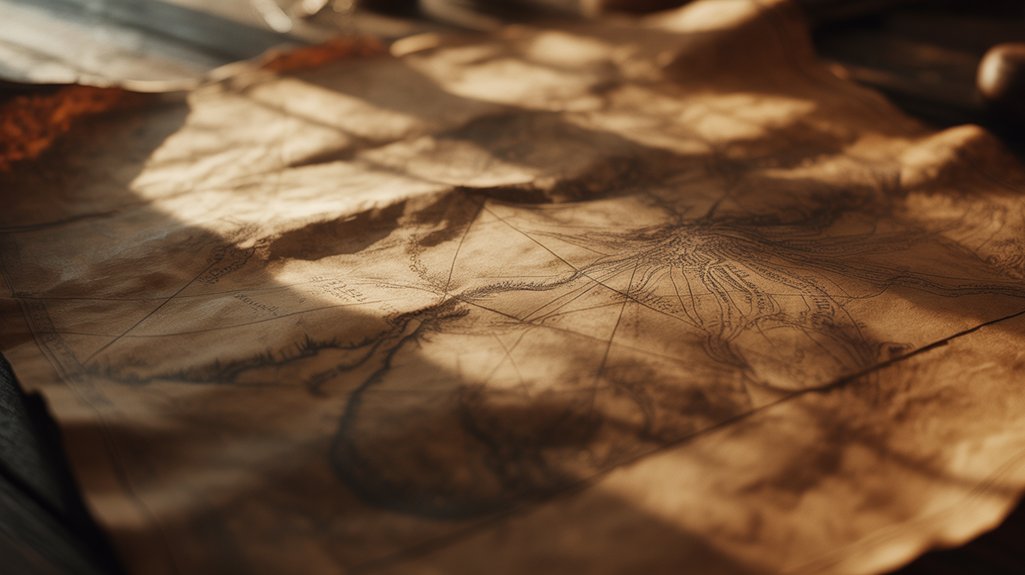
The phenomenon transcends mere media representation, extending into neurocognitive territories where human perception itself becomes the cryptid’s unwitting architect.
Pareidolia—that eldritch tendency to conjure meaningful forms from chaos—alters shadow and fog into chimeric beasts. Visual perception operates through ancient mechanisms: survival demanded recognizing predators in incomplete data, patterns emerging from rustling leaves, faces materializing in twilight’s ambiguity.
Pattern recognition bias compounds this neural alchemy. Ambiguous footprints become Sasquatch evidence. Distant ripples shift into plesiosaur necks.
Our neural wiring transforms uncertainty into certainty, sculpting legendary creatures from incomplete evidence and evolutionary expectation.
Research confirms humanity’s innate pattern-seeking drives these misidentifications—observers project belief onto blurred photographs, interpreting random stimuli through cultural expectations.
Studies demonstrate faces appearing in inanimate objects with startling frequency, the same psychological patterns that birthed cryptid folklore across continents. This isn’t mere delusion; it’s evolutionary inheritance manifesting as modern mythology.
The mind seeks order in wilderness, creating monsters from morning mist. These cognitive tendencies preserve legends, each generation perceiving what predecessors described, perpetuating mysteries through the very architecture of human consciousness.
Tourism Economy Depends on Legends
Beyond mere folklore preservation, cryptid legends have evolved into economic engines that sustain entire communities through manufactured mystery. The eldritch allure of Bigfoot changes Forks, Washington into a pilgrimage site where believers and skeptics alike purchase chimeric merchandise, their collective fascination generating tangible revenue streams for local enterprises.
Scotland’s Loch Ness Monster exemplifies this phenomenon most dramatically—contributing £25 million annually to regional coffers through carefully orchestrated tourist attractions, accommodations, and themed experiences that commodify the unknown.
Cryptid tourism operates at the intersection of authentic folklore and calculated marketing strategies. Communities utilize these legends as unique differentiators within competitive tourism markets, recognizing that manufactured encounters with the impossible possess undeniable economic impact.
The Sasquatch Festival draws thousands to Washington’s wilderness. Local businesses flourish. Ancient mysteries become modern commerce.
These regions understand a fundamental truth: legend-making creates wealth, converting whispered tales into sustainable industries that depend upon humanity’s eternal fascination with liminal creatures inhabiting the spaces between known and unknowable.
Cryptids’ Enduring Cultural Impact

The unknown beckons.
These legends illuminate liminal spaces where empirical science hasn’t penetrated, channeling collective yearning for wonder in an increasingly mapped world.
Cryptids endure because they represent freedom itself—the possibility that wilderness still conceals secrets beyond institutional knowledge.
Frequently Asked Questions
What Scientific Methods Are Used to Investigate Cryptid Sightings?
Cryptozoologists employ rigorous field research methodologies, documenting tracks, collecting hair samples, analyzing thermal signatures across mist-shrouded valleys where eldritch creatures allegedly dwell.
Evidence analysis incorporates DNA testing, photographic authentication, witness interview protocols—tools bridging empirical science with humanity’s ancient yearning for mystery.
These investigators won’t surrender to dogmatic skepticism nor blind credulity. They navigate liminal spaces between known zoology and chimeric possibility, honoring indigenous testimonies while maintaining scholarly standards.
Freedom-seeking souls recognize truth emerges through disciplined inquiry, not institutional gatekeeping.
How Do Governments Regulate Cryptid Hunting and Exploration Activities?
Governments impose restrictive regulatory frameworks that’d frustrate even Victorian-era naturalists with telegraphs seeking chimeric beasts.
Most nations require hunting permits for standard game, yet they’ve left cryptid pursuit deliberately unregulated—creatures unrecognized scientifically exist in legal limbo. This bureaucratic void grants seekers unexpected freedom.
Indigenous territories, however, maintain sacred protocols protecting eldritch entities through ancestral law.
Federal lands demand permits for research expeditions, though enforcement remains lax. The boundary between legitimate wildlife study and cryptozoological investigation blurs, creating space for autonomous exploration.
What Legal Protections Exist for Cryptids if They Are Discovered?
Legal protections remain frustratingly nebulous for undiscovered entities. Most frameworks classify specimens under existing wildlife statutes—endangered species acts, habitat preservation ordinances—yet cryptid conservation faces profound philosophical hurdles.
Without confirmed existence, legal status can’t materialize. However, precedent exists: coelacanths, once deemed mythological, gained immediate protection upon 1938 rediscovery.
Indigenous sovereignty laws offer another pathway, protecting sacred beings through tribal jurisdiction. Freedom-minded advocates champion preemptive legislation, though bureaucratic mechanisms resist acknowledging liminal creatures dwelling between empirical proof and ancestral knowledge.
How Much Funding Goes Into Academic Cryptozoology Research Annually?
Academic cryptozoology research receives negligible institutional cryptid funding—perhaps tens of thousands annually across scattered independent scholars, not millions.
Universities rarely allocate resources to this liminal discipline, relegating it beyond mainstream science’s threshold. Private organizations, expedition societies, and individual investigators shoulder the burden, their modest grants barely sustaining fieldwork in remote valleys and forgotten forests.
This paucity reflects academia’s reluctance to acknowledge what dwells between empirical certainty and ancestral knowing, leaving truth-seekers unfettered yet unsupported.
What Are the Most Credible Cryptid Encounters Documented by Witnesses?
What testimonies can withstand scholarly scrutiny?
The Patterson-Gimlin footage from 1967’s Bluff Creek remains enigmatic—that eldritch figure striding through ancient redwoods defies dismissal.
Eyewitness testimonies from Congo’s Likouala swamps describe Mokele-mbembe with startling consistency across generations.
Historical accounts of Tasmania’s thylacine sightings persist decades post-extinction, documented by indigenous Palawa people and settlers alike.
These encounters share common threads: multiple witnesses, physical traces, cultural continuity.
They’re not proof—but they’re chimeric fragments demanding investigation, not ridicule.
Conclusion
These chimeric entities persist not as mere folklore, but as eldritch mirrors reflecting humanity’s deepest anxieties. From Mesopotamian clay to Scottish lochs, they’ve transcended their corporeal absence—becoming economic lifelines, cultural touchstones, psychological phenomena. Their shadows lengthen across centuries, shape-shifting through each generation’s lens. We recognize patterns where none exist, yet these cryptids endure. They’re living heritage, breathing metaphors that blur mythology’s threshold with modernity’s skepticism, forever dwelling in cognition’s murky periphery.

